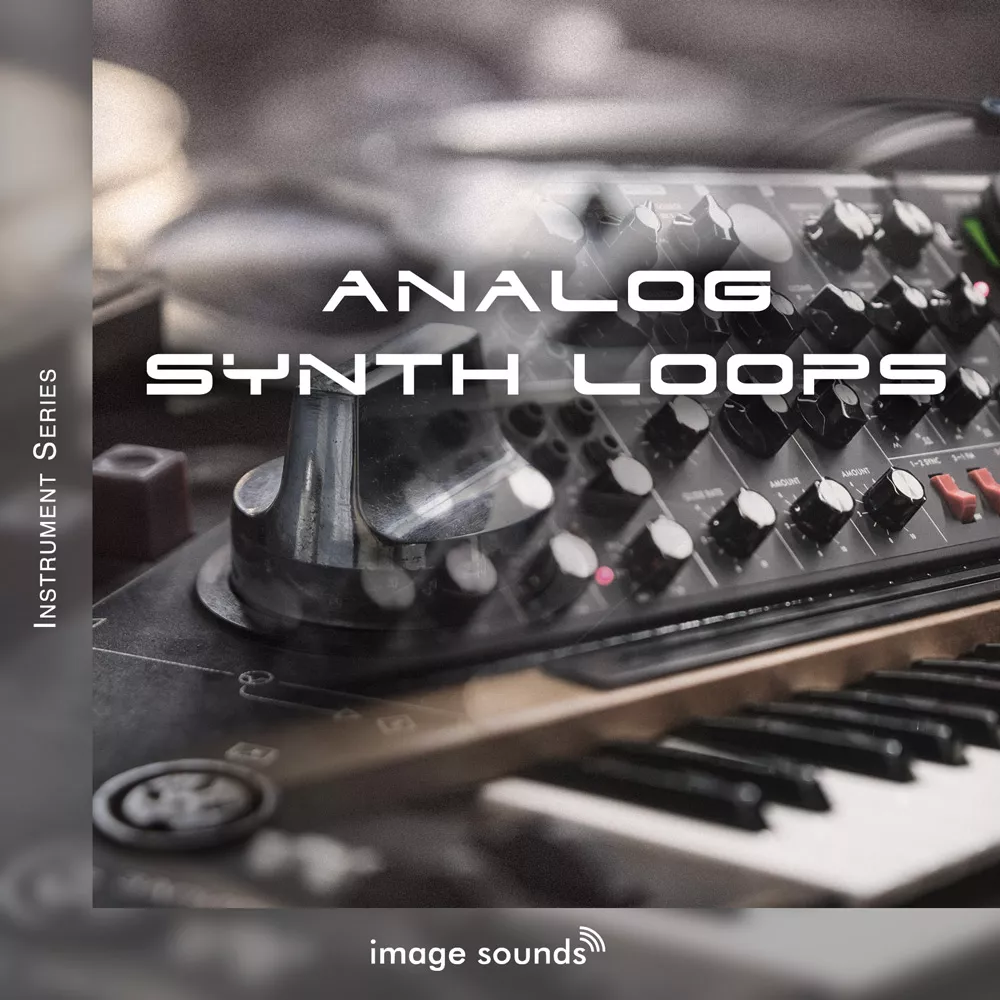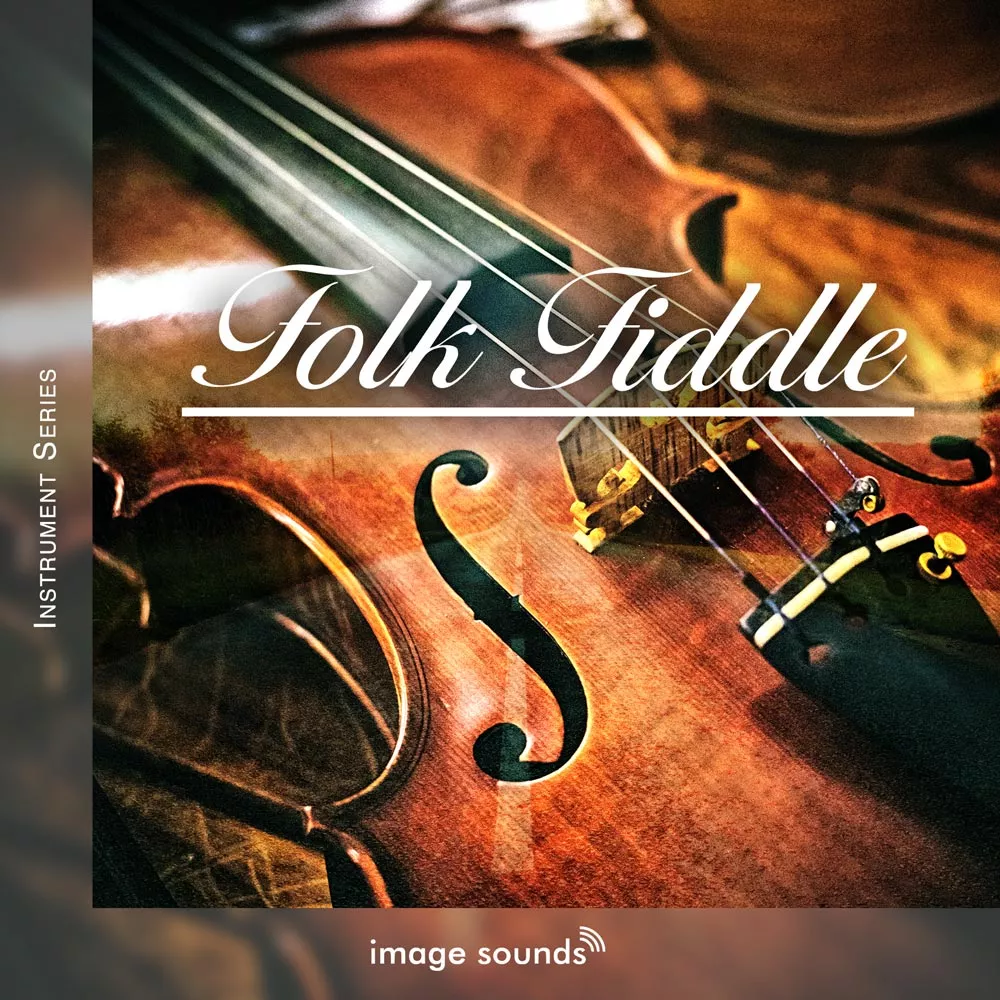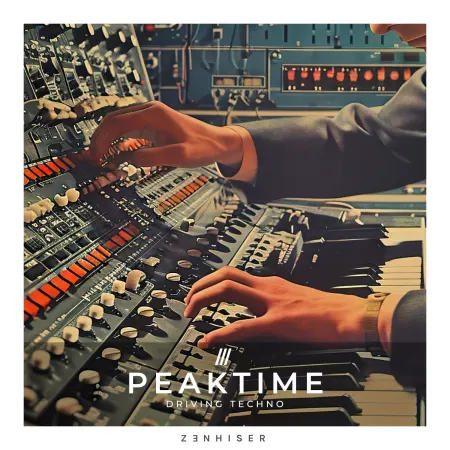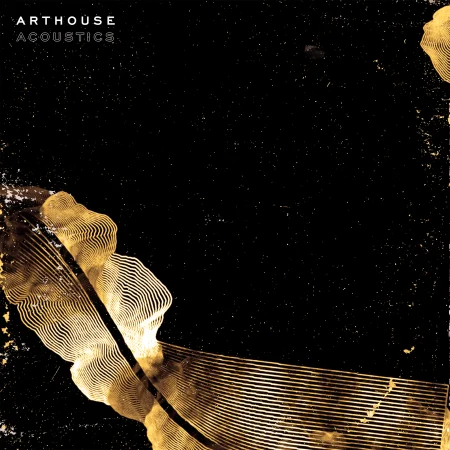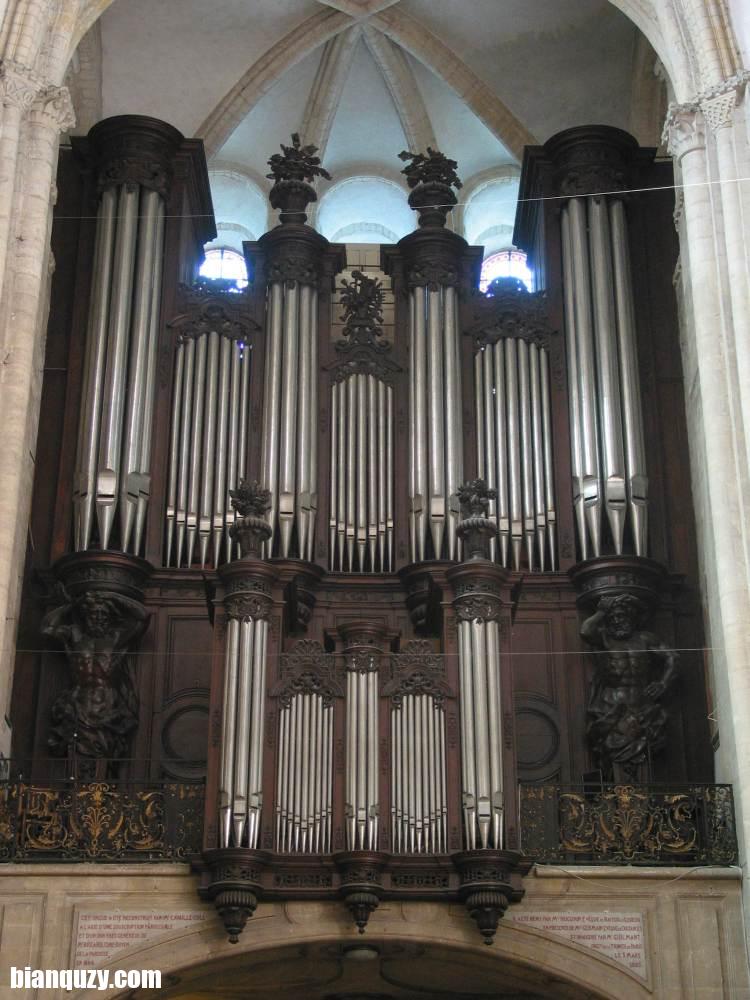
P2P | 2022年12月23日| 22.15GB
卡昂圣艾蒂安修道院的风琴
由Jan Skvaril博士编译。
自从征服者威廉在1066年建立以来(他被葬在教堂的长老会里),“修道院”一直是整个地区的教育中心和音乐生活的中心。很有可能从一开始,仪式就伴随着风琴。编年史第一次提到管风琴是在14世纪,然而这种乐器被Hugenots(1562年)摧毁,直到200年后才被取代。这种新乐器的制造者是来自鲁昂的勒费夫尔兄弟。他们享有与同时代的克里quot, Isnard或Moucherel类似的声誉。来自鲁昂的木工大师Gouy建造了一个巨大的橡木管风琴外壳,由两个大力神雕像装饰,它们支撑着踏板塔。圣化仪式在1745年2月10日举行。风琴有超过4000个管,60个寄存器,5个键盘(其中3个有53个音调)和当时不寻常的踏板,包括30个键和13个寄存器(包括双小号和号角)。这台仪器在革命暴乱中完好无损地保存了下来。就像在圣马克西明的管风琴一样,在合适的时间演奏《马赛曲》有助于挽救管风琴。然而,到了19世纪中期,由于保养不善、庞大的体积和复杂的机械结构,这种管风琴几乎无法演奏了。即使韦尔施耐德(Verschneider, 1859-1863)进行了全面的重建,也未能改变这种可悲的局面。于是,他决定利用保存完好、仍价值6万法郎的古伊案卷来获得一个新的风琴。
与阿里斯蒂德Cavaillé-Coll的谈判始于1882年,他提交了3个建议:清洁,维修管道和机械部件(8 850 Fr),或与以前相同,加上新的机械部件与气动跟踪动作(15 600 Fr)或一个全新的最现代设计的风琴(6 000 Fr)。
1882年4月6日,Abbé Bréard和Cavaillé-Coll签署了一份价值70000法郎的新仪器的协议。Abbé Bréard自己贡献了3万法国法郎,其余部分由教区捐款支付。Cavaillé-Coll与教会名义上的管风琴演奏家Jules Marie和Alexander Guilmant合作,形成了管风琴配置大纲。朱尔斯·玛丽还写了一篇关于之前历史风琴的官方评估。Josef Koenig,谁也修复个案工作,在最后的工作中,接替主语调,Felix Reinsburg。后来Cavaillé-Coll的继承者查尔斯·穆丁也参与了这项工作。Alexander Guilmant于1885年3月3日在Cavaillé-Coll的现场为这架风琴揭幕。
尽管人们一致认可这种新乐器,但仍有许多评论说,这种新乐器的声音很弱,很模糊。最终,Cavaillé-Coll听到了这些评论,感到非常震惊。他派出著名的风琴专家菲尔伯特去了解更多情况。他发现大量观众的出现可以极大地改变教堂的音响效果。那古老的、音调尖锐的、有许多变声的纪念性风琴被一种浪漫的、交响乐的乐器所取代,教民和听众根本没有准备好。随着时间的推移,争论逐渐平息,被人遗忘。Josef Koenig和他的儿子Paul-Marie一直维护到1944年。1928年,电力取代了4个calcanter的工作。卡昂在第二次世界大战期间遭到严重破坏,但圣艾蒂安修道院奇迹般地得救了。尽管如此,仍然需要对器官进行重建,这是由雅科-拉弗涅公司进行的,没有实质性的变化。唯一的例外是(根据Marcel Dupre的建议)在Recit中添加了一种混合物(Plein Jeu IV)。然而,1999年晚些时候,该登记簿再次被移除。最后一次大规模的重建工作于2001年完成,并将风琴恢复到1885年的原始形态。自1975年以来,该风琴被列为国家文化遗产。
阿里斯蒂德Cavaille-Coll
Cavaille-Coll这个姓氏第一次出现在1767年2月12日的出生登记记录中,那天是让-皮埃尔·Cavaille和玛丽亚-弗朗西斯卡·科尔的婚礼,玛丽亚-弗朗西斯卡·科尔是巴塞罗那一位纺织工和船帆制造商的女儿。他们的第一个儿子多米尼克于1771年出生。他后来成为文森特(1808年)和阿里斯蒂德(1811年2月3日在蒙彼利埃)的父亲。管风琴制作工艺在这个家族有着悠久的传统。让-皮埃尔的叔叔约瑟夫已经是一名管风琴制作师,并将这门手艺教给了他的侄子。1780年玛丽-弗朗西斯卡去世后,让-皮埃尔再婚,多米尼克同父异母的弟弟马丁Cavaillé-Coll在这第二次婚姻中出生,并成为一名风琴制造师。多米尼克的儿子文森特和阿里斯蒂德是家族风琴制作传统的巅峰之作。
这个家庭经常在法国和西班牙之间流动,但最终在图卢兹定居下来。阿里斯蒂德,有音乐和技术天赋
P2P | 23 December 2022 | 22.15GB
Organ of the St. Etienne Abbey in Caen
Compiled by dr. Jan Skvaril.
Since its foundation by William the Conqueror in 1066 (who was buried in the presbytery of the church) the “Abbaye aux Hommes” was the center of the education for the whole region and center of the musical life. It is very likely that since the very beginnings, the ceremonies were accompanied by organ. The chronicles mention the organ for the first time in the 14th century, however this instrument was destroyed by the Hugenots (1562) and not until 200 years later was it replaced. The builders of the new instrument were brothers Lefevre from Rouen. They enjoyed a similar reputation as their contemporaries Cliquot, Isnard or Moucherel. Master carpenter Gouy from Rouen built a monumental oak organ casework adorned by two Herculean statues, which support the pedal towers. The consecrating ceremony was on February 10, 1745. The organ had over 4000 pipes, 60 registers, 5 keyboards (three of them with 53 tones) and for that time unusual pedal board comprising 30 keys and 13 registers (including double trompette and clarion). The instrument survived without much harm during the revolutionary rampages. Just like with the organ in St. Maximin, playing Marseillaise at the right time was helpful in saving the organ. However, by the mid 19th century, the organ was practically unplayable due to its poor maintenance, its sheer size and mechanical complexity. Even a comprehensive reconstruction by Verschneider (1859-1863) did not help to change the sad situation. This led to the decision to obtain a new organ utilizing the perfectly preserved Gouy’s casework still valued at 60 000 francs.
The negotiation with Aristide Cavaillé-Coll started in 1882 and he submitted 3 proposals: cleaning, repair of pipes and mechanical parts (8 850 Fr), or the same as before plus new mechanical parts with a pneumatic tracker action (15 600 Fr) or a complete new organ with the most modern design (60 000 Fr).
The agreement for a new instrument for 70 000 Fr was signed by Abbé Bréard and Cavaillé-Coll on April 6, 1882. Abbé Bréard contributed 30 000 Fr himself and parish collections covered the rest. Collaboration of Cavaillé-Coll with the church titulary organist Jules Marie and Alexander Guilmant led to the organ disposition outline. Jules Marie also wrote an official assessment of the previous historic organ. Josef Koenig, who also repaired the casework, succeeded the main intonator, Felix Reinsburg, in the final work. Also Charles Mutin, later a successor to Cavaillé-Coll, collaborated on the work. Alexander Guilmant inaugurated the organ in ceremony on March 3, 1885, in the presence of Cavaillé-Coll.
Despite unanimous recognition given to the new instrument, comments sprung up that the new organ sound was weak and indistinctive. Eventually, Cavaillé-Coll heard the comments and was astonished. He sent out a renowned organ expert, Philbert, to find out more. He discovered that the presence of a large audience can dramatically change the acoustics of the church. The old, sharply intonated, monumental organ with numerous mutation voices was replaced with a Romantic, symphonic instrument to which the parishioners and listeners were simply not prepared. The controversy quieted down over time and was forgotten. Josef Koenig, and his son Paul-Marie maintained the instrument until 1944. Electric power replaced the work of 4 calcants in 1928. Caen was heavily damaged during World War II, but by a miracle, the St. Etienne abbey was saved. Still, reconstruction of the organ was needed, which was performed by Jacquot-Lavergne company without substantial changes. The one exception was (by suggestion of Marcel Dupre) the addition of a mixture (Plein Jeu IV) in Recit. However, later in 1999 the register was once again removed. The last substantial reconstruction was finished in 2001 and returned the organ to its original form of 1885. Since 1975, the organ is listed as a national cultural heritage.
Aristide Cavaille-Coll
The last name Cavaille-Coll appeared for the first time in the birth record register on February 12, 1767, the wedding day of Jean-Pierre Cavaille and Maria-Francesca Coll, a daughter of a weaver and sail maker from Barcelona. Their first-born son Dominique was born in 1771. It was he who later became the father of Vincent (1808) and Aristide (February 3, 1811 in Montpellier). The craft of organ building had a long tradition in this family. Already Jean-Pierre’s uncle Joseph was an organ builder and taught the craft to his nephew. Jean-Pierre remarried after Marie-Francesca’s death in 1780 and Dominique’s half-brother Martin Cavaillé-Coll was born of this second marriage and became an organ builder. Dominique’s sons Vincent and Aristide were the culmination of the family organ building tradition.
The family moved frequently between France and Spain but in the end settled down in Toulouse. Aristide, endowed with musical and technical talents, received quality polytechnic education and met with significant personalities that influenced him positively (Jean-Pierre Boisgiraud, Félix Borel). Together with his brother Vincent, they accompanied their father on his assignments and reconstructions. One can say Aristide had life-long luck by meeting the right contacts at the right time from circles of economical, political and trade life. In 1832, the father and sons invented a successful, technically innovative musical instrument (poikilorgue), which received support not only from the composer Rossini, but also from the Minister Thiers. This resulted in the decision to undertake a journey to Paris in 1833, where the family resettled and began their organ building trade. The beginnings were difficult, despite the goodwill obtained through the work on the organ of St. Denis and financial support of music-loving yet pragmatic banker Henri Place. The wedding of Aristide and Adele Blanc played a positive role through the contacts of his brother-in-law Hippolyte, a well-informed civil servant.
The workshop moved around several times. The company life was marred by the separation with Vincent and later by the death of Dominique (1862). Shortly after the workshop relocated to a definite and satisfactory location on 15 Avenue du Maine, Adele died, leaving Aristide a widower.
Despite these setbacks, Cavaille-Coll continued his work with vigor. In the middle of his workshop, there was a former dancehall, which he changed into an exposition hall. Young organists (Gigout, Vierné, Dupre) visited to try out the showcased instruments. Frequently, Cavaille Coll milled around, giving advice about registration, and saying, “…just make music reflecting natural human intellect, which is so rare.”
Cavaille-Coll, frequently depicted in black velvet toque designed according to a Holbein portrait, was quite authoritative and had a distinctive personality. He remained conservative in his endeavors. He despised business changes and the evolution of the capitalistic monetary system. He didn’t like shareholding, despite officially forming several companies. However, he kept his ultimate signature rights and decision making close to his chest. The family never fell into poverty, but the economics of his trade was at times complicated, despite broad support of powerful individuals and the good name he made for himself. He never wanted to cheapen the quality of his performed work, building not only classical church organs but also his popular poikilorgues and small instruments for schools, institutions and households.
Altogether, he made 11 loans and mortgages, covered by his workshop, tools, and even personal belongings that included the house he lived in. He had difficulties meeting the terms at times. Aristide valued Gabriel Reinsburg as his top intoner and made him his partner and manager of the workshop on 15 Avenue du Maine. After Gabriel’s death in 1891, economic troubles set in and one year later, at the request of his family and by the decision of the court, the workshop was auctioned to satisfy the debts. Emile Cholet, a rich merchant from Orleans, recognized the importance of Cavaille-Coll. He bought the complete workshop and rented it to Aristide for a symbolic fee. Cavaille-Coll had to leave the family house and spent the last year of his life with his daughter on 21 rue du Vieux-Colombier. It was a fateful decision for Aristide to spurn ideas of his technically gifted son Gabriel, who pushed for more electric innovations in the organ building, and after being rejected left for Spain to become a mine engineer. Paradoxically, Aristide turned to those ideas on his last grand organ in Rouen. By losing Gabriel, Aristide missed the last opportunity to educate a successor for his company. Just one year before his death, he sold the company to Charles Mutin who had worked for him the previous 10 years. Aristide Cavaille-Coll died suddenly on October 13, 1899. Charles Mutin said the funeral eulogy on October 16th at the Montparnasse cemetery.
Mutin continued his work in the tradition of Cavaille-Coll, but his successor Auguste Convers set a new course in 1924 when he took over the company. He designated Cavaille-Coll as a mediocre musician who built instruments to fit the limited artistic requirements of Frank or Widor. Convers promoted the reintroduction of multiple mutation registers and electric parts. He built several interesting instruments, but mostly he produced low-quality factory made instruments with unreliable electric tracker action systems. The economic crisis of 1929 was detrimental to the life of the company. This led to fusion of the financially failing remnants of the company with the firm Pleyel and later to its demise.
Cavaille-Coll the organ builder
Aristide Cavaille-Coll designed the concept of the symphonic organ. He mastered the classic organ building craft and was technically versatilely gifted. In many aspects, he stayed conservative and held on time attested approaches. On the other hand he was not afraid to experiment and introduce new inventions. Soon after arrival in Paris, he succeeded in the competition to build the new organ for the St. Denis basilica. He reportedly was done with the successful design in just two days. The work progress was slow however, especially with the troublesome tracker action. To his luck, Aristide met with Charles Barker in Paris, who improved Hamilton’s invention of the pneumatic lever, which after touching the key, opens air entry into a pneumatic motor, filling air into wedge bellows manipulating tracker action or other devices. This lever, multiplying the force of fingers applied on the keyboard, allowing for the development of larger, more powerful organs still responsive to the human hand with more registers, couplers and combinations than was possible before. Also, the organ console could be built detached from the main organ.
Cavaille-Coll immediately recognized the importance of this invention for organ building. The instrument in St. Denis basilica was finalized in 1841 and was met with tremendous success. It became the fashion to hold private concerts there featuring prominent musicians with invited guests from political and economic circles. Only 30 years old, Aristide was awarded a Societe d’ Arts silver medal “…for the improvements he introduced to the organ building as exemplified in the royal church St. Denis.” It’s of interest to note that Charles Barker later deserted and joined another organ builder Dublaine et Callinet and together they built a monumental organ for St. Eustache church in 1844. By a turn of unfortunate events, during repair work on the organ, Barker jolted a lighted candle that fell into the St Eustache instrument when it was only six months old and the fire destroyed it. This ultimately led to the bankruptcy of the firm.
Cavaille-Coll recognized the importance of different air pressure needed for different registers. He divided therefore the airchest in 2 sections: one for labial and and wide mouth pipe voices (jeux de fonds), and the other one for narrow mouth pipe voices, mutations, mixtures and reeds (jeux de combinaison). Each sections had a separate air supply with its specific air pressure. In this way, “air stealing” phenomenon between these two groups was avoided. A simple foot lever (appels) above the pedalboard enabled joining the windchests. Principals are acoustically diverse due to various pipe mouth width in the English organ building way.By combining four diverse basic voices (montre, flute, bourdon, gambe) in the 8′ position, the Romantic symphonic acoustic ideal was achieved. The registers in pedal are plentiful, usually also with solo voices.
Cavaille-Coll built over 600 organs. He built not only large instruments for Paris and other French cities but also many smaller choir instruments, chamber organs and other instruments for school and institutions. During his time, it was fashionable to have an organ built even in homes. Especially in the early stage of his career, in addition to organs, Cavaille-Coll built so called poikilorgues, which were a type of reed instruments with the possibility of dynamic expression.
Besides the aforementioned instrument in St. Denis, it is necessary to refer to the organ in Ste. Clotilde basilica related to the work of Cesar Franck. In 1863, a five manual organ for St. Sulpice was built (Widor, Dupre). More of his works can be found in Ste. Madeleine or Ste. Trinite. His most representative organ in Notre-Dame Cathedral in Paris was finished in 1868. Since that time it was rebuilt numerous times, electrified and equipped with a new console. He exhibited an extraordinary monumental organ at Trocadero Palace during the World Exhibition of 1878. It attracted the best organists which used it to play in a series of fourteen concerts. The organ of St. Etienne in Caen, preserved in its almost original form, was built in 1882 and later in 1890 the four manual organ was finished in Rouen.
The lifelong dream of pious Cavaille-Coll was to build an organ for St. Peter in Rome. He designed and continually improved the concept which was presented to three popes. The work of Cavaille-Coll was known and appreciated in Rome, however, his dream never realized. And so, to this day, there is an indistinct organ not corresponding to its impressive location in the basilica.
Special thanks
We are greatly endebted to Mr. Alain Bouvet, the titulaire of the Cavaillé-Coll instrument in Caen, for the support he gave us during the recording.
We are grateful to Mr. Peter Bengtson for numerous suggestions during the development of this virtual instrument.


